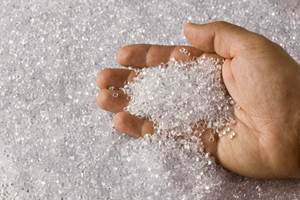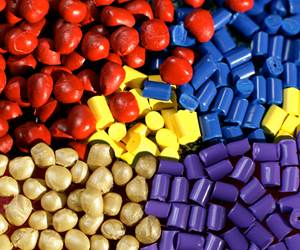Quest for Sustainability to Govern Pharmaceutical Packaging Material Choice
New study from Future Market Insignts looks at pharmaceutical packaging market through 2029.
Global pharmaceutical packaging demand surpassed the revenues worth $75 billion in 2018. Pharmaceutical Packaging Market: Quest for Sustainability to Govern Packaging Material Choice, analyzes the global industry in the 2014-2018 timeframe and provides opportunity assessment for 2019 to 2029. The report in the latest from London-based Future Market Insights, a provider of market intelligence and consulting services, serving clients in over 150 countries, with delivery centers in the U.S. and India.
Bottles, with the current share of over a third of the market value, are expected to remain highly sought after as a type of packaging for pharmaceutical products. The report also highlights that packer bottles continue to represent higher popularity over liquid bottles. Furthermore, blisters and vials & ampoules will remain the next most preferred types of pharmaceutical packaging, particularly driven by HDPE and LDPE.
Key findings and projections:
&²Ô²ú²õ±è;â–ª&²Ô²ú²õ±è; The global pharmaceutical packaging market is projected to expand at a CAGR of nearly 6%, during 2019-2029.
&²Ô²ú²õ±è;â–ª&²Ô²ú²õ±è; The increasing consumer demand for personalized packaging is expected to be one of the key drivers for growth of the pharmaceutical packaging market.
&²Ô²ú²õ±è;â–ª&²Ô²ú²õ±è; North America is expected to maintain a prominent position in the pharmaceutical packaging market, during the forecast period.
&²Ô²ú²õ±è;â–ª&²Ô²ú²õ±è; The United States pharmaceutical packaging market alone is estimated to create an incremental opportunity, which is slightly lesser than the entire Western Europe market combined. Pharmaceutical packaging manufacturers in North America are pushing for more sustainable content in raw materials. Hence, the regional market is expected to be very prominent, although Europe as a whole accounted for nearly 1/3 of the total market size in 2018.
&²Ô²ú²õ±è;â–ª&²Ô²ú²õ±è; The Asia Pacific (excluding Japan) pharmaceutical packaging market is estimated to represent an incremental opportunity, which is more than 1.2x that of North America and Western Europe markets, during the forecast period.
&²Ô²ú²õ±è;â–ª&²Ô²ú²õ±è; Increased government spending on the healthcare sector is expected to be the key factor propelling the demand for efficient pharmaceutical packaging solutions in Asian countries.
&²Ô²ú²õ±è;â–ª&²Ô²ú²õ±è; The pharmaceutical packaging market in countries such as India and China, is projected to register CAGR of above 7% during the next decade.
&²Ô²ú²õ±è;â–ª&²Ô²ú²õ±è; Manufacturers of pharmaceutical packaging solutions are expected to target the lucrative APEJ region, due to the meteoric growth of the pharmaceutical industry in the region, especially single-dose packaging solutions.
Three key factors influencing the pharmaceutical packaging market: actors Influencing the Pharmaceutical Packaging Market:
&²Ô²ú²õ±è;â–ª&²Ô²ú²õ±è; Growth in Investment on Sustainable Pharmaceutical Packaging Solutions Leading to Increased Use of Bioplastics and Materials Such as Glass
Globally, both glass and metal are projected to register growth rates of over 4% and 6%, respectively, in the pharmaceutical packaging market, during the forecast period. Pharmaceutical packaging manufacturers are investing in recovery and recycling facilities in order to support the growing ecosystem for recyclable materials and recycled packaging solutions. Apart from these, plastic pharmaceutical packaging solutions such as thermoformed packaging are now increasingly being recycled to cater to specific pharmaceutical packaging needs. There is also more emphasis on R&D projects aimed at finding solutions to certain plastic recycling challenges such as those encountered while recycling multi-layer flexible pharmaceutical packaging solutions.
&²Ô²ú²õ±è;â–ª&²Ô²ú²õ±è; Anti-counterfeit pharmaceutical packaging to grow in demand to maintain product integrity
A significant loss in revenue due to counterfeiting of products is not sustainable for companies. Therefore, the key would be for companies to reduce revenue loss due to complex supply chain issues, while investing more on procuring anti-counterfeit solutions for their drugs. Manufacturers of pharmaceutical packaging are expected to focus more on design-level innovations to enable pharmaceutical manufacturers to tackle this problem. It would be interesting to see how active, smart, and intelligent packaging solutions can help transform the global pharmaceutical packaging market during the next decade. Solutions such as track and trace systems and embedded watermarks are already being used in pharmaceutical packaging solutions. Growth of cold chain service providers has enabled intercontinental trade of drugs, thereby generating demand for labels and other track & trace solutions embedded in pharmaceutical packaging formats to enable real time tracking of drugs in transit.
It would be challenging for packaging manufacturers to integrate intelligent packaging solutions without compromising on compliance.
&²Ô²ú²õ±è;â–ª&²Ô²ú²õ±è; New Biological Drug Formulations to Generate Demand for Specific Pharmaceutical Packaging Solutions
Research & development in the pharmaceutical industry is a never-ending process. New biological drug formulations will continue to propel demand for innovative pharmaceutical packaging solutions, which prevent drug interaction with the packaging material. One of the perfect examples for this is glass vials, which are experiencing changes in market demand. Some novel biologics have been found to be capable of delaminating glass, resulting in unwanted glass chipping in formulations. Therefore, going forward, manufacturers are forced to look for alternative production techniques to avoid glass chipping.
Market structure analysis
&²Ô²ú²õ±è;â–ª&²Ô²ú²õ±è; The global pharmaceutical packaging market is fragmented in nature as the top ten manufacturers account for around 1/5 of the market.
&²Ô²ú²õ±è;â–ª&²Ô²ú²õ±è; Top companies operating in the global pharmaceutical packaging include Schott AG, Gerresheimer, and Ardagh Group SA. Furthermore, Tier-2 players, i.e. those who have a segmental revenue share in the range of 1-3% of the total pharmaceutical packaging market, cumulatively account for 55-65% of the global market.
&²Ô²ú²õ±è;â–ª&²Ô²ú²õ±è; Most of the key players maintain a strategic presence and focus on the high value North America and Western Europe regions. However, with the lucrative growth opportunities being represented by the Asia Pacific pharmaceutical packaging market, it is anticipated that manufacturers will also eye the region for potentially opening new production facilities.
&²Ô²ú²õ±è;â–ª&²Ô²ú²õ±è; Top players operating in the global pharmaceutical packaging market rely on sustainable, intelligent, and dynamic packaging solutions for product differentiation.
Related Content
March 2025 Resin Pricing: Commodity Resin Prices Firm Up
Unplanned and planned production disruptions, rising feedstock costs and variables such as the potential impact of pending tariffs all factor in.
Read MorePrices Up for PE, PP, PS, Flat for PVC, PET
Trajectory is generally flat-to-down for all commodity resins.
Read MorePolyethylene Fundamentals – Part 4: Failed HDPE Case Study
Injection molders of small fuel tanks learned the hard way that a very small difference in density — 0.6% — could make a large difference in PE stress-crack resistance.
Read MoreFundamentals of Polyethylene – Part 6: PE Performance
Don’t assume you know everything there is to know about PE because it’s been around so long. Here is yet another example of how the performance of PE is influenced by molecular weight and density.
Read MoreRead Next
Beyond Prototypes: 8 Ways the Plastics Industry Is Using 3D Printing
Plastics processors are finding applications for 3D printing around the plant and across the supply chain. Here are 8 examples to look for at NPE2024.
Read MoreLead the Conversation, Change the Conversation
Coverage of single-use plastics can be both misleading and demoralizing. Here are 10 tips for changing the perception of the plastics industry at your company and in your community.
Read MoreFor PLASTICS' CEO Seaholm, NPE to Shine Light on Sustainability Successes
With advocacy, communication and sustainability as three main pillars, Seaholm leads a trade association to NPE that ‘is more active today than we have ever been.’
Read More















